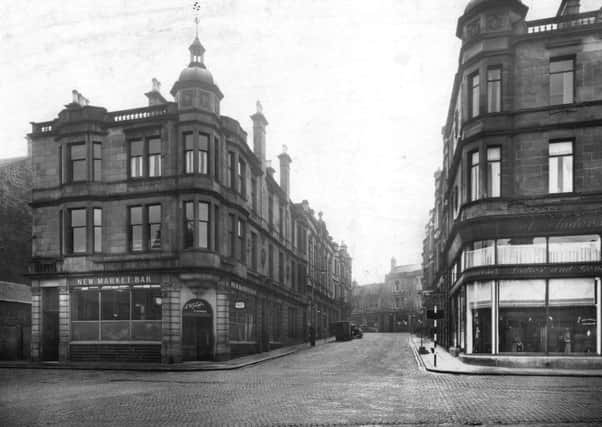Make an old man happy '“ let me see our own Suez!


The line of the street marks what was once the western limit of the town when Falkirk was encircled by a wall.
Not a whopper like Stirling or Edinburgh but more of a dyke linking five ports or gates at key points.
Advertisement
Hide AdAdvertisement
Hide Ad‘Lint’ is the old Scots word for flax, the raw material of linen, and the lands lying west of the built up area were the ‘riggs’ or fields of flax, grown and processed so that the hand loom weavers of ‘Woo’er Street could maintain the supply of cloth to the town.
However as this business faded away and the land was built over, the Lint Riggs became a narrow lane just wide enough to take a horse and cart with an iron gate at the High Street end.
By the 1890s the street was in a pretty poor state with old crumbling shops and houses plagued by rats and other assorted vermin.
The rag store was particularly bad and, looking across the road from the Burgh Buildings, David Ronald watched the rats each morning – counting over 30 on some days as they assembled to drink from the roof gutters.
Advertisement
Hide AdAdvertisement
Hide AdBut there was an even worse sight: “On a warm summer morning it was quite common to see the pavement with numerous maggots” crawling from the shops.
Ronald was given the job of transforming this situation which was out of keeping with the new prosperous Falkirk and in 1903 he produced an elaborate scheme involving compulsory purchase and demolition of all properties on either side and the creation of a new wide street.
Anyone wishing to build a new property was required to conform to high design specifications and several handsome buildings were the result.
The 1906 Masonic Temple, home to Lodge Callendar 588, is particularly impressive with its classical façade and fantastic painted glass windows.
Advertisement
Hide AdAdvertisement
Hide AdOpposite is the old Temperance Café, the successor to the ‘hospital’ founded by the Earl of Callendar in the 17th century and, at the north end, the Newmarket Bar owned by James Aitken with the Brewery office upstairs.
I was told that it is the only street in the UK with a dome on each corner but I hae ma doots!
However, David Ronald’s piece de resistance was not above ground but deep below the street.
He had studied at University and this disturbed more than a few councillors, one of whom told him “That is the worst of employing high-falutin’ engineers with their high collars and bowler hats who went to Paris for the weekend”!
Advertisement
Hide AdAdvertisement
Hide AdHe didn’t disappoint them when he came up with a revolutionary and expensive plan for a stone arched underground passageway, six foot six inches high and four foot wide carrying water, gas and telephone services with spurs leading to each property.
At first it was kicked out but he persisted and eventually they agreed.
Ronald recalls that the excavations were so deep that the Herald described them as ‘The new Suez Canal’!
Engineers came from all over the country to see the new system.
Advertisement
Hide AdAdvertisement
Hide AdAnd I admit that one of my unfulfilled ambitions is to do the same!
I am standing by with my boiler suit and lamp waiting for an invitation from the council’s water and drainage boys.
If one of them reads this then, be a pal and make an old man happy!